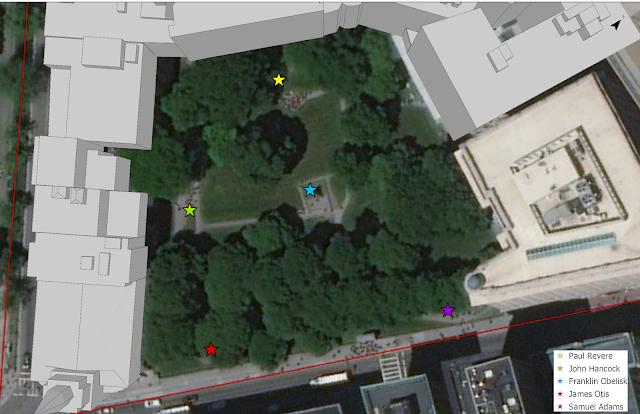Boston: Granary Burying Ground

This week's site along the Freedom Trail, although we are once again studying a location that predates the American Revolution, does not necessarily lend itself very well to the 3D mapping that you have seen over the past few weeks. And that is because, other than the markers that stand along the ground, the primary points of interest lie just a few feet below the surface. Settled in a plot of land immediately beside the Park Street Church, you will discover the Granary Burying Ground - a cemetery that serves as the final resting place of many of Boston's most famous residents. Named for the grain storage building that used to sit between it and Boston Common, this 17th-century burial ground contains approximately 2,300 grave markers but is estimated to contain the remains of over 5,000 individuals - hundreds of whom are infants. In the map below I have added a few markers to help you spot some of the names that may be familiar. As you can see from the leg...


